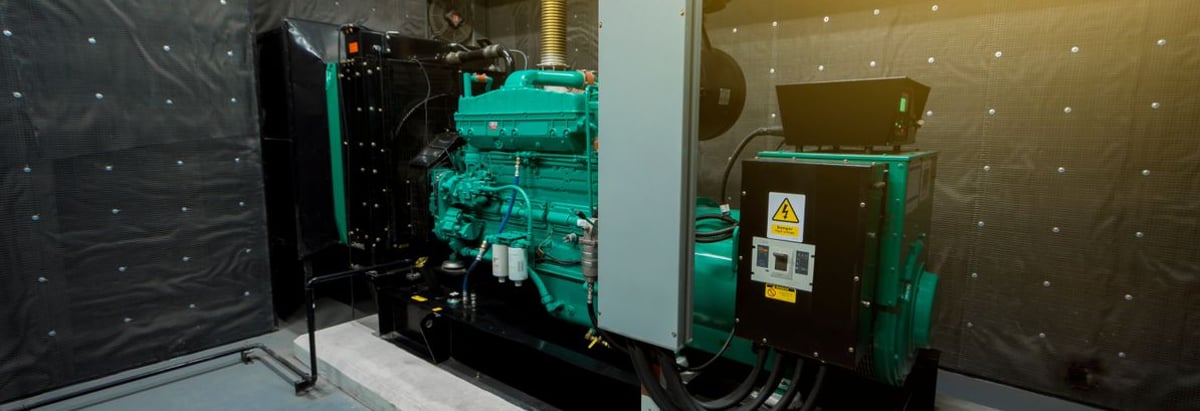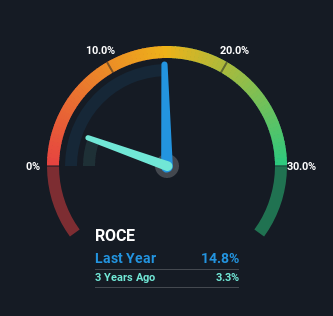- India
- /
- Electrical
- /
- NSEI:TDPOWERSYS
TD Power Systems (NSE:TDPOWERSYS) Might Have The Makings Of A Multi-Bagger

There are a few key trends to look for if we want to identify the next multi-bagger. Ideally, a business will show two trends; firstly a growing return on capital employed (ROCE) and secondly, an increasing amount of capital employed. This shows us that it's a compounding machine, able to continually reinvest its earnings back into the business and generate higher returns. With that in mind, we've noticed some promising trends at TD Power Systems (NSE:TDPOWERSYS) so let's look a bit deeper.
What Is Return On Capital Employed (ROCE)?
If you haven't worked with ROCE before, it measures the 'return' (pre-tax profit) a company generates from capital employed in its business. To calculate this metric for TD Power Systems, this is the formula:
Return on Capital Employed = Earnings Before Interest and Tax (EBIT) ÷ (Total Assets - Current Liabilities)
0.15 = ₹843m ÷ (₹8.6b - ₹2.8b) (Based on the trailing twelve months to September 2022).
Therefore, TD Power Systems has an ROCE of 15%. That's a relatively normal return on capital, and it's around the 14% generated by the Electrical industry.
Check out the opportunities and risks within the IN Electrical industry.

Above you can see how the current ROCE for TD Power Systems compares to its prior returns on capital, but there's only so much you can tell from the past. If you'd like to see what analysts are forecasting going forward, you should check out our free report for TD Power Systems.
What Does the ROCE Trend For TD Power Systems Tell Us?
TD Power Systems has recently broken into profitability so their prior investments seem to be paying off. The company was generating losses five years ago, but now it's earning 15% which is a sight for sore eyes. Not only that, but the company is utilizing 24% more capital than before, but that's to be expected from a company trying to break into profitability. This can indicate that there's plenty of opportunities to invest capital internally and at ever higher rates, both common traits of a multi-bagger.
The Bottom Line
In summary, it's great to see that TD Power Systems has managed to break into profitability and is continuing to reinvest in its business. And with the stock having performed exceptionally well over the last five years, these patterns are being accounted for by investors. In light of that, we think it's worth looking further into this stock because if TD Power Systems can keep these trends up, it could have a bright future ahead.
TD Power Systems does have some risks though, and we've spotted 2 warning signs for TD Power Systems that you might be interested in.
While TD Power Systems isn't earning the highest return, check out this free list of companies that are earning high returns on equity with solid balance sheets.
Valuation is complex, but we're here to simplify it.
Discover if TD Power Systems might be undervalued or overvalued with our detailed analysis, featuring fair value estimates, potential risks, dividends, insider trades, and its financial condition.
Access Free AnalysisHave feedback on this article? Concerned about the content? Get in touch with us directly. Alternatively, email editorial-team (at) simplywallst.com.
This article by Simply Wall St is general in nature. We provide commentary based on historical data and analyst forecasts only using an unbiased methodology and our articles are not intended to be financial advice. It does not constitute a recommendation to buy or sell any stock, and does not take account of your objectives, or your financial situation. We aim to bring you long-term focused analysis driven by fundamental data. Note that our analysis may not factor in the latest price-sensitive company announcements or qualitative material. Simply Wall St has no position in any stocks mentioned.
About NSEI:TDPOWERSYS
TD Power Systems
Manufactures and sells AC generators and electric motors in India, Japan, the United States, Europe, and Turkey.
Flawless balance sheet average dividend payer.
Market Insights
Community Narratives




